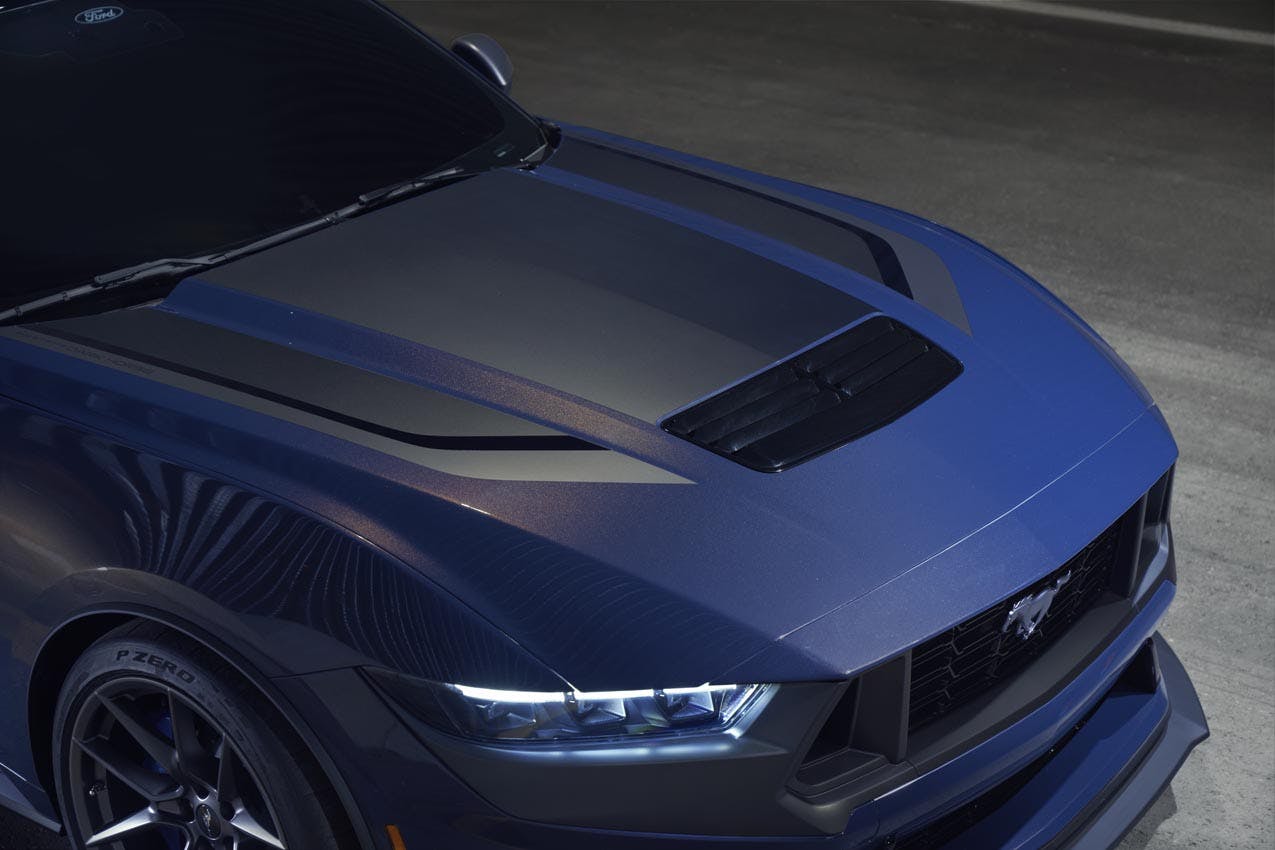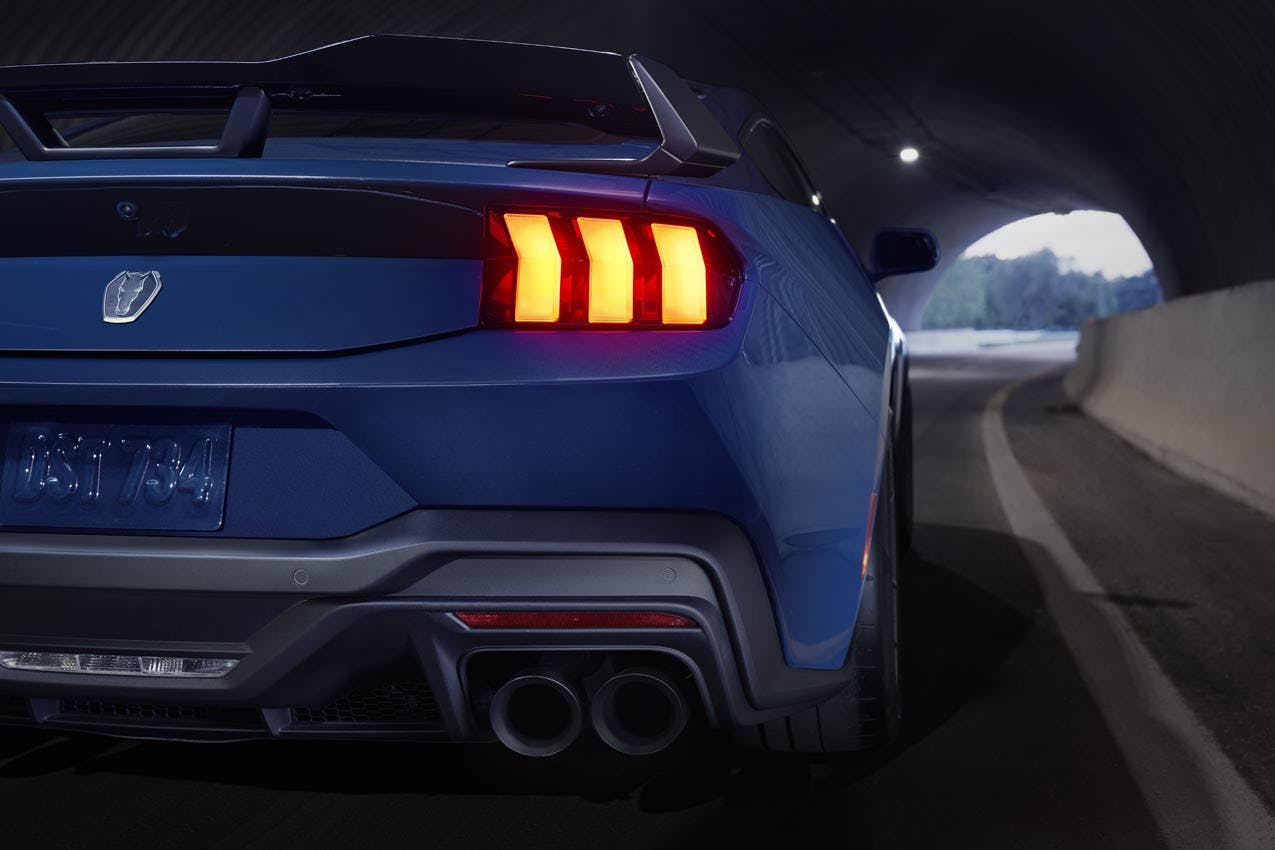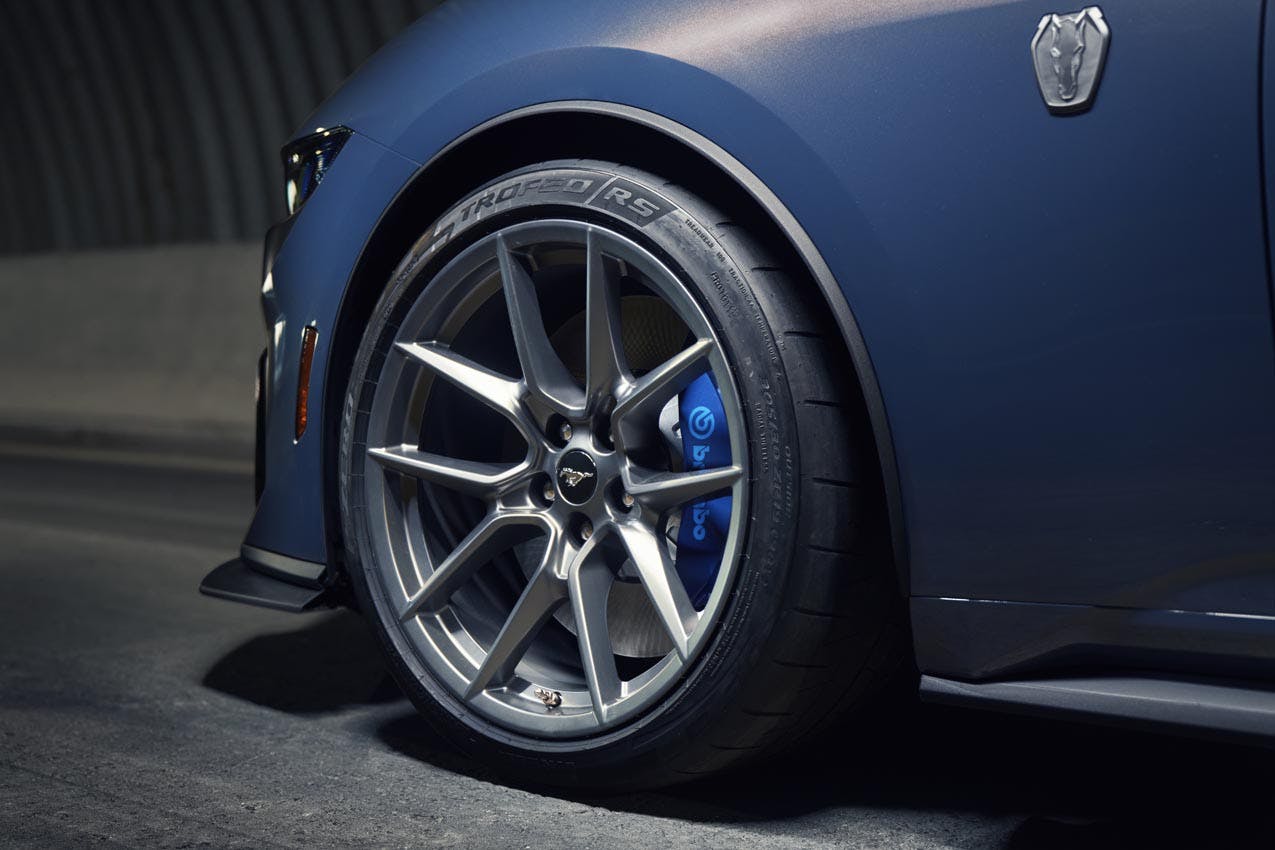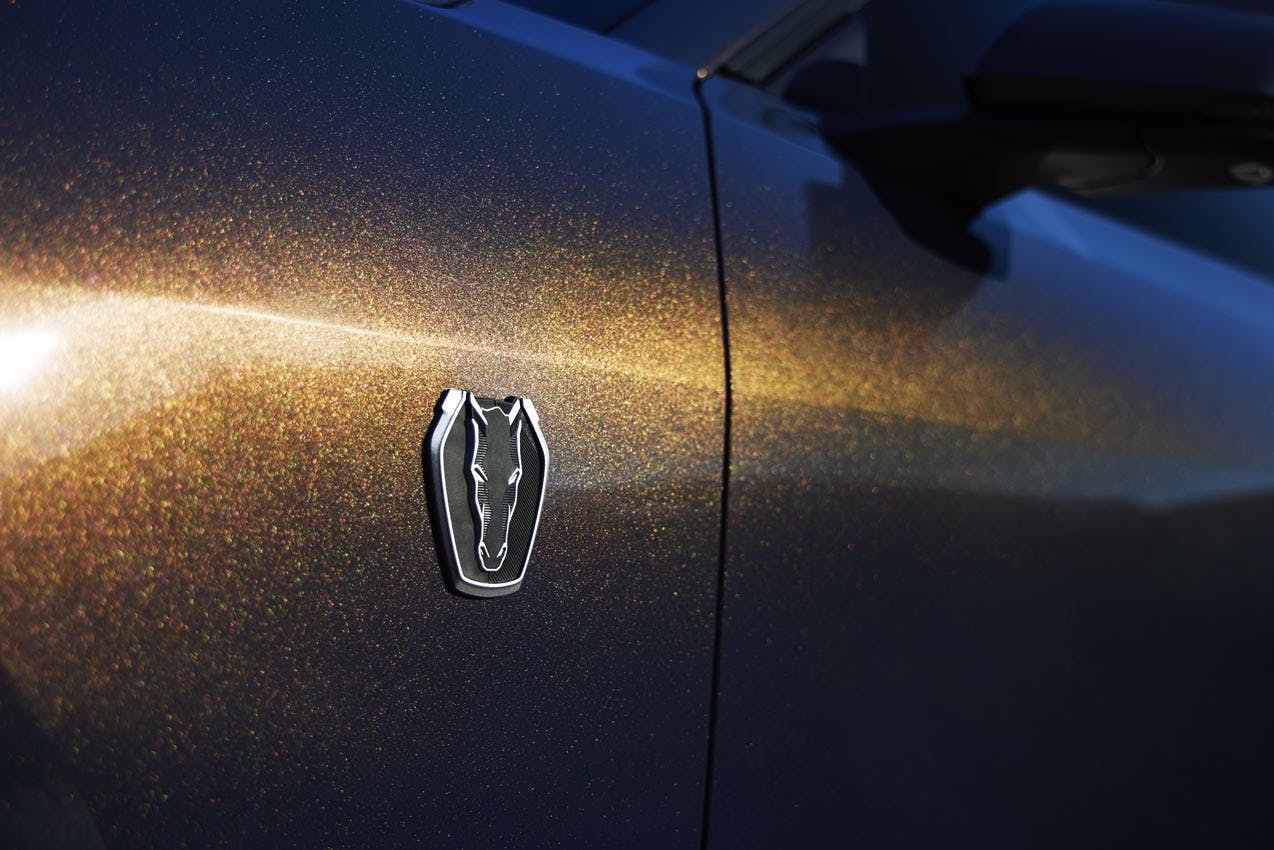500-plus-hp Dark Horse is the new king of Coyote Mustangs
For most of the 2024 Mustang’s reveal event last night, three ponies sat arranged in a formation that left a notable gap in front as engineers, designers, and other spokespeople added their two cents about the cars. Towards the end of the evening’s festivities, Mustang chief engineer Ed Krenz motioned towards the empty space and joked that there was room in the stable for another pony.
The car that rumbled out on stage, however, was all business.
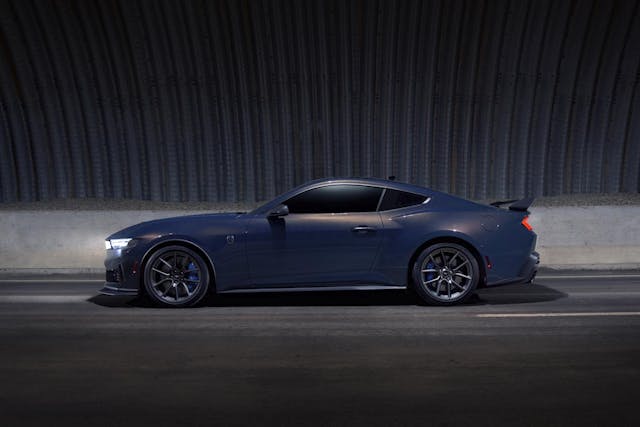
Meet the Dark Horse, the first new performance series in the Mustang family in 21 years. With a tuned, 5.0-liter V-8, aerodynamic improvements, and some serious track hardware, the Dark Horse looks ready to bring the thunder. Let’s dig in.
The Dark Horse will use an upgraded version of the Mustang GT’s Coyote V-8 that cribs the connecting rods from the 760-hp Shelby GT500 and adds unique nostrils to feed the dual throttle-bodies. Ford says to expect somewhere north of 500 horsepower, although the specific figure is still a secret.
Ford clearly focused on the Dark Horse’s endurance during long, hot track stints. A transmission oil cooler, auxiliary engine oil cooler, brake cooling ducts, rear axle cooler, a unique lightweight radiator, and more powerful cooling fans all come standard.
The Dark Horse will offer a unique Tremec six-speed manual by default, but a 10-speed automatic will be available as an option. (Automatic cars will do without the transmission oil cooler.) A Torsen limited-slip rear differential is also included.

The good news continues in the handling department, with a thicker rear sway bar and standard MagneRide adaptive dampers (the latter is optional on the regular car). The Dark Horse will get a lightweight strut-tower brace and a K-brace to further stiffen the chassis and improve steering feel. Staggered 19-inch wheels (9.5 inches wide up front and 10 inches wide in the rear) will wear Pirelli P-Zero tires.
If all this kit leaves you wanting, Ford will also offer a handling package for the Dark Horse. You’ll get stiffer springs, beefier front and rear sway bars, and even wider wheels (10.5 inches up front and 11 inches out back) shod with even stickier, Pirelli P-Zero Trofeo rubber. You’ll also get the most downforce-inducing aerodynamics package of any new Mustang, with a unique rear wing with an integrated Gurney flap.
Although they won’t be offered right away, Ford is also planning to make carbon-fiber wheels available for the Dark Horse to further reduce unsprung mass and sharpen handling. It will be the first time that a non-Shelby Mustang gets such tech.
Inside, you’ll find the same two-screen setup as in the regular, seventh-gen Mustang. The 12.4-inch digital instrument cluster and the 13.2-inch central infotainment screen are tucked behind a single piece of glass angled towards the driver. The Dark Horse gets a thicker, suede-wrapped flat-bottomed steering wheel that offers a special drive mode button to keep changes a thumb-flick away.
Lower side skirts, a mild rear diffuser, and a fixed rear wing will be the easiest hints to onlookers that you went to the dark side. Or, maybe, they’ll notice the new Dark Horse Badge—the first forward-facing badge in the Mustang’s history. It can be found on either fender, on the trunk, both door sills, on the instrument panel, and on the screens, so opportunities for analysis abound.
If streetability isn’t a priority, you’ll be excited to know Ford is also readying two versions of the Dark Horse that will be track-use-only. The first, called the Dark Horse S, is for weekend racing enthusiasts. The second, called the Dark Horse R, is being built from the ground-up for wheel-to-wheel racing.
The Dark Horse S will get a stripped interior fitted with an FIA-certified safety cage, a central control panel for vital switches, an electrical disconnect, and a fire suppression system. A removable passenger seat will be offered to accomodate a buddy or, perhaps, a driving coach. There’s an adjustable rear wing for added downforce and, most excitingly, Multimatic’s trick DSSV dampers, which are currently found only on the S550-gen GT4 race car.
The Dark Horse R kicks thing up another notch still. Its chassis gets seam welding for added rigidity, a fuel cell for increased range, and special serialization that will approve it to compete in a number of sanctioned racing series.
Ford hasn’t announced any sort of production cap on the Dark Horse, whether regular, S, or R. However, it was keen to highlight that each road-going Dark Horse gets a unique chassis number, perhaps implying that the decision has yet to be made.
We’re pumped to see that Ford is taking the Mustang’s performance credentials so seriously from the get-go. The Mustang Dark Horse looks ready to carve canyons, conquer track days, and carry the Ford performance flag into a seventh generation of pony-car history.
Check out the Hagerty Media homepage so you don’t miss a single story, or better yet, bookmark us.


